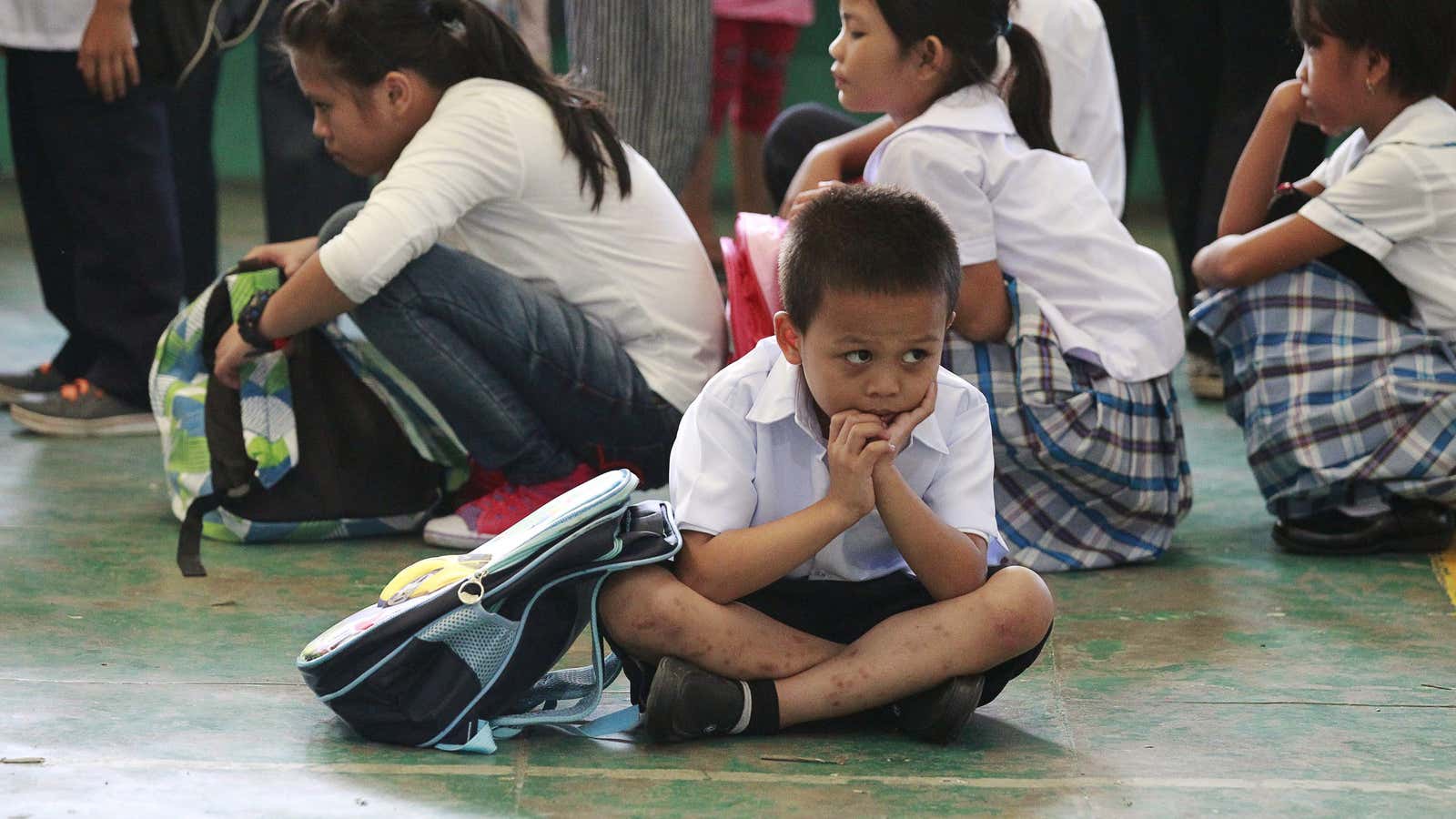Gender equality is within arm’s length—at least in secondary schools. Across the globe, the enrollment of boys and girls in schools (before university) is nearly equal: For every 100 boys enrolled in high school (pdf, p.11) so are 98 girls, according to UNESCO’s statistics institute Global Education Monitoring report.
From a distance, education looks pretty gender-equal. Yet a closer look at the numbers shows a different picture: Only in about half of the world’s countries is enrollment actually equal across genders. In fact, the overall appearance of equality hides two gaps: In some countries, boys still outnumber girls in secondary school enrollment, while in others, it’s the boys who are disadvantaged, dropping out of school while the girls continue to study.
For girls’ education, Asia and northern Africa have led the progress: Twenty five years ago, fewer than 80 girls were enrolled for every 100 boys, according to the United Nations. In 1993, South Asia had as few as 40 girls enrolled per 100 boys (pdf, p. 3), and now boasts 95 girls per 100 boys (pdf, p. 11).
Overall, only about half the world’s countries have achieved gender equality in secondary school enrollment. In the rest, either boys or girls are disadvantaged. Boys are missing out on education in many parts of the world, particularly in Latin America and the Caribbean. In Honduras, for instance, 65 boys attend school (p. 6) per 100 girls.
Currently, 45% of the world’s countries have fewer boys enrolled in secondary school than girls. In Latin America, the Caribbean, Europe and North America, boys have had lower attendance rates than girls for decades, and in Eastern Asia, the enrollment of boys compared to girls started decreasing steeply in the early 2000. Meanwhile, the trend of girls enrollment looks solidly towards improvement.
While girls are especially disadvantaged in low income countries, boys fare worse in middle income and high income countries. That is where they pay the consequences of a school system that tends to disengage them (pdf, p. 13), and perpetrate stereotypes. Boys, the report notes, tend to feel more like they don’t belong in a school environment and instead should be working. Environmental factors are also important: Boys are more likely to be in violent environment in schools, or even to suffer violence from teachers, driving them to drop out.
The result is a disparity in skills. In North African and Western Asian countries, for instance, girls were already reading a grade ahead of boys by grade four.
